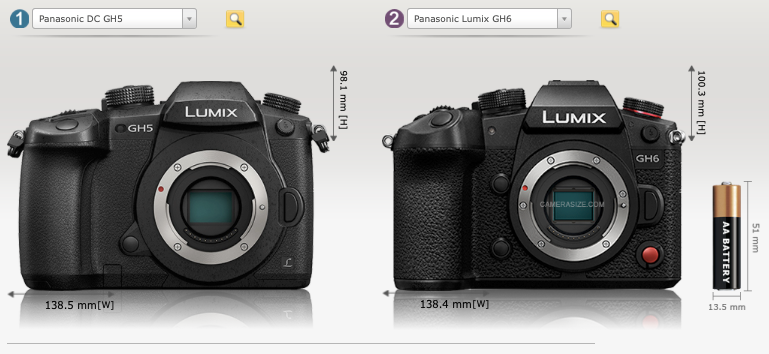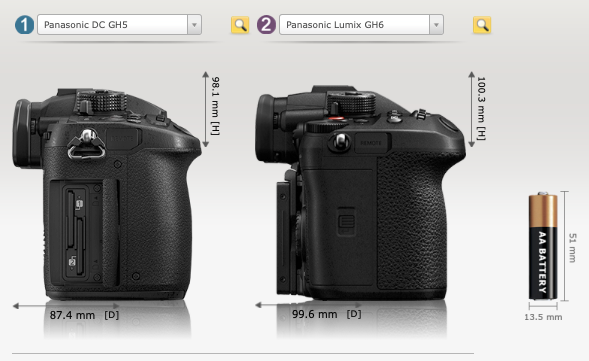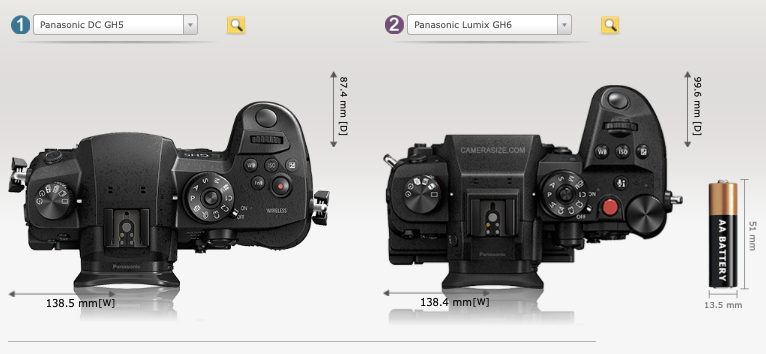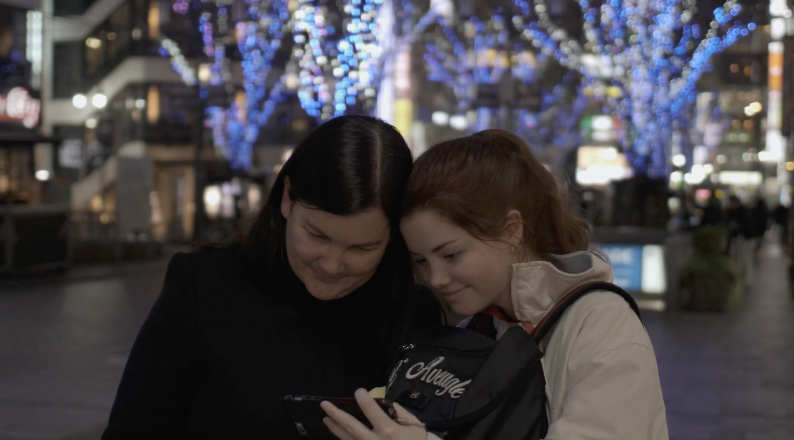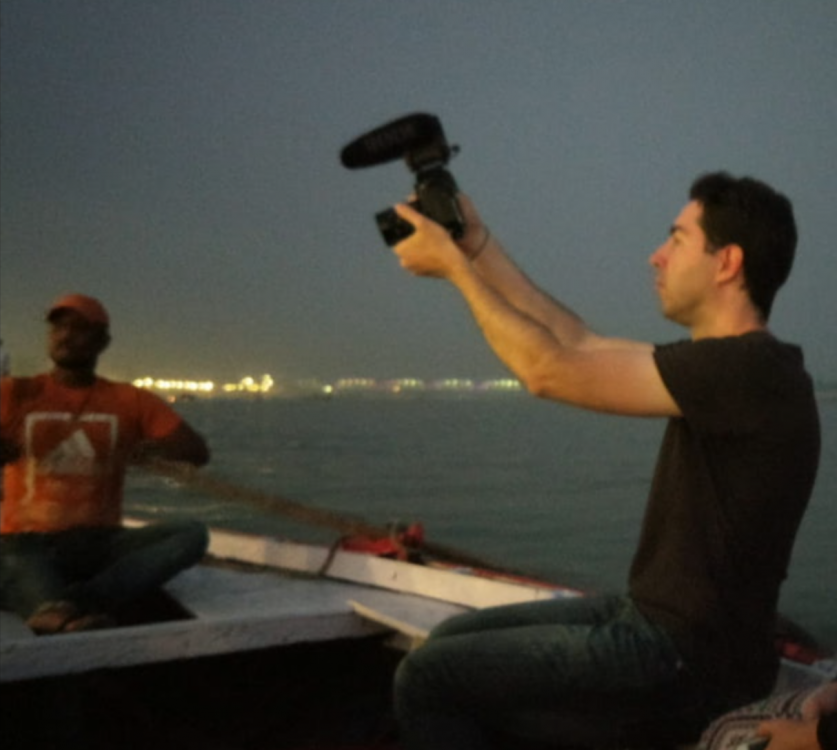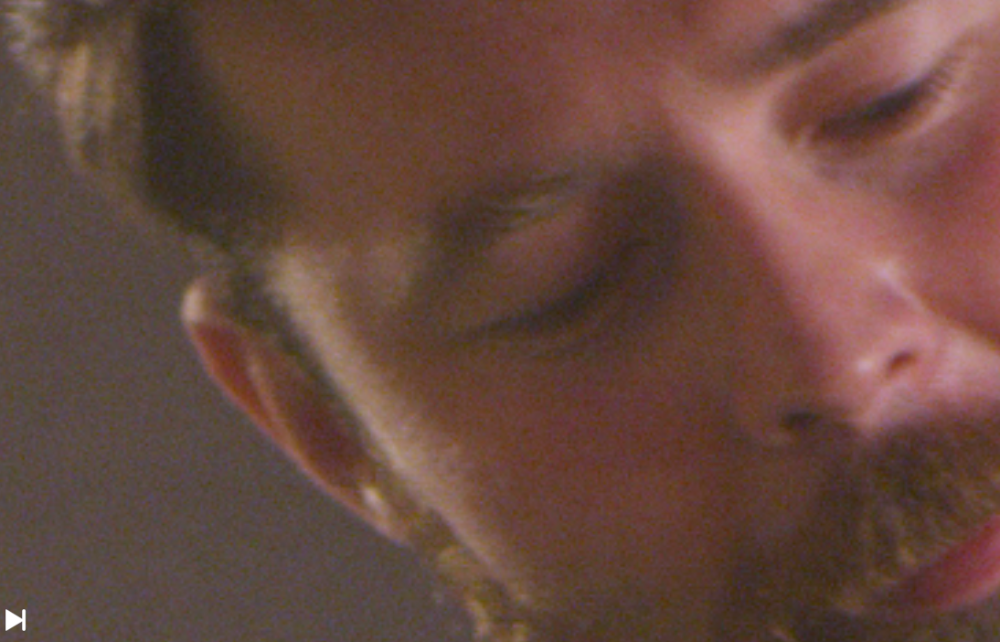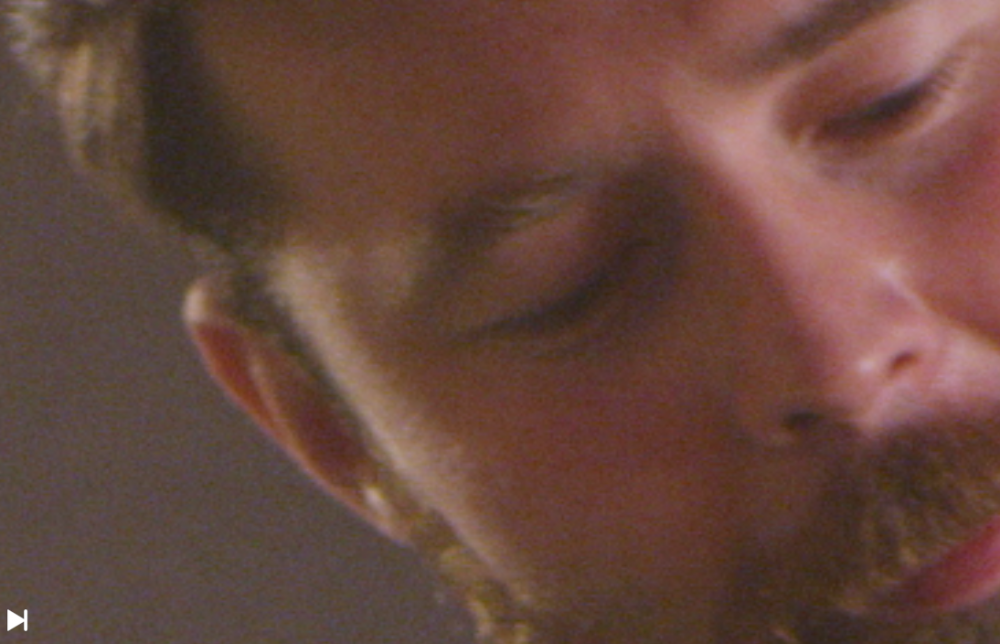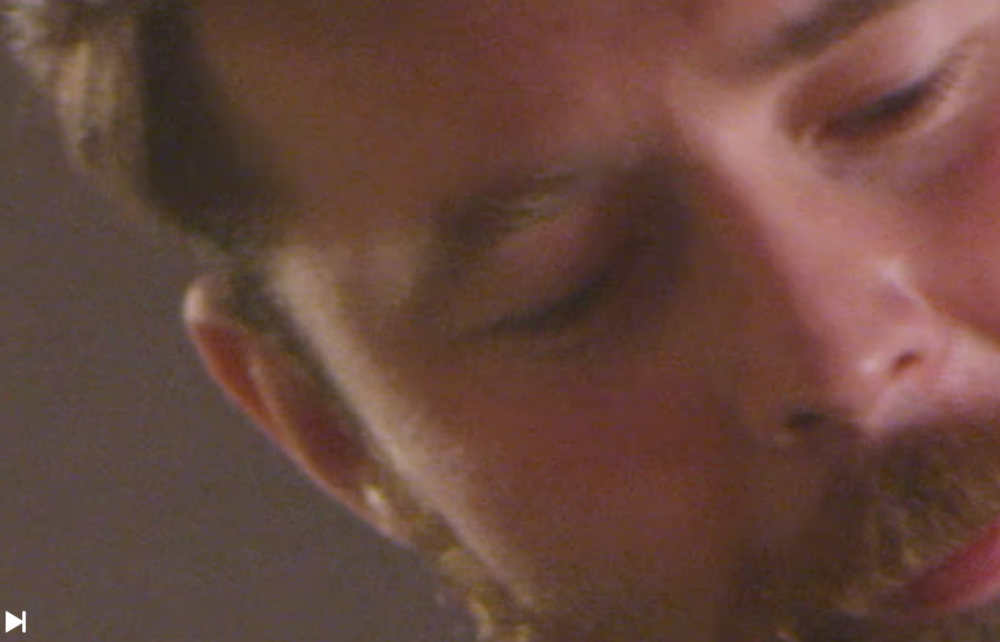-
Posts
8,012 -
Joined
-
Last visited
Content Type
Profiles
Forums
Articles
Everything posted by kye
-
I must admit, I'm not that surprised that a bunch of folks on a forum don't understand the market as much as they think they do! Still, it bodes well for both OM and also the MFT system in general, which by extension is good for all consumers as it encourages competition. As much as FF enthusiasts are quick to point out that FF is now a serious competitor to MFT in specs, I wonder if it wasn't for the MFT manufacturers pushing things forward if FF would be nearly as advanced now as it is.
-
I think it was the combination of the screen and the fan. I'm super happy with it as it's not too much larger and it's not larger from the front, which is what matters from the perspective of shooting in public and not gathering too much attention. By the time you put a lens on a camera, then depth of it is huge so a few extra mm isn't a big deal. My suggestion is to start with how and where you shoot and work backwards. For events you'll probably be valuing flexibility over other performance, so you're probably talking about zooms. Then the question comes of how much you care about having a long zoom range vs having a faster aperture. At one extreme you've got the 12-35mm F2.8 which is the fastest but shortest zoom, then things like the 12-60mm F2.8-4, then all the way to 12-100mm F4 and even the 12-200mm F3.5-6.3. I don't shoot events but my understanding is that mostly there is decent light, and many here have commented that the longer zooms work best because you're always just a zoom adjustment away from the shot. Especially with the improved low-light from the GH6.
-
The size comparison is available now on camerasize.com: https://camerasize.com/compare/#698,888 Panasonic DC GH5 is 0% (0.1 mm) wider and 2% (2.2 mm) shorter than Panasonic Lumix GH6. Panasonic DC GH5 is 12% (12.2 mm) thinner than Panasonic Lumix GH6. Panasonic DC GH5 [725 g] weights 12% (98 grams) less than Panasonic Lumix GH6 [823 g] (*inc. batteries and memory card). Panasonic DC GH5 dimensions: 138.5x98.1x87.4 mm (camera body only, excluding protrusion) Panasonic Lumix GH6 dimensions: 138.4x100.3x99.6 mm (camera body only, excluding protrusion)
-
In addition to the above, one thing I saw recently (can't remember where though!) was that someone was shooting film and wanted to have much lower saturation skies instead of bright-blue skies, so they overexposed the film and then developed it darker to normalise the exposure. This gives much less saturated skies as it pushed all the highlights up into the highlight rolloff where there's much less difference between the R G and B levels, and thus less saturation. The skies were a pale blue rather than saturated and it gave a kind of look to the skies vaguely reminiscent of the bleach-bypass look. That's also the kind of thing you can do with a Film Emulation LUT - raise the levels beforehand and then lower them afterwards and see the effects.
-
There are a few advantages to using in-camera EIS, so it's worth experimenting with (on non-critical footage) to get a feel for it, but mostly doing EIS in post is more flexible as it's not burnt in and you can try different things to see what works.
-
This forum is also social media.
-
A key point that I feel is worth mentioning here is that you can't expect a LUT to grade your film for you. What I mean by this is that you should be adjusting the image before putting it through the LUT (grading "under" the LUT) and potentially adjusting the overall levels after the LUT too, for more overall adjustments. Grading under the LUT is simply adjusting the images exposure, WB, contrast, and other attributes, which is the same as adjusting the lighting ratios on set, the exposure of the camera and WB of the scene while shooting on film. If you don't like the amount of contrast in a LUT, lower the contrast after you apply the LUT and adjust to taste prior to the LUT. If you want a stronger look then increase the contrast before the LUT and lower it afterwards and you'll get a more pronounced look, or do the opposite. These are creative tools, not one-click grading machines 🙂
-
@PannySVHS I read somewhere that early on Canon were much pickier about which lenses got the 'L' designation and there are a number of non-L lenses that would have been given the L status if released decades later. In that sense it's really down to reading the reviews and looking at sample images.
-
I do... but I'm not about to jump around saying that it's a critical feature for everyone. I think it's about shooting in available-light. I currently own a GH5 and have f0.95 primes to get as much light into the camera as possible, but it's a stretch. I shoot auto-ISO so I don't know the exact values, but I can tell you that I've pulled the camera up to my eye in a low-light situation and as I've adjusted the aperture from F2.8 (which it might have been during the day) to f095 I see the image go from looking like the worst colour science in the world to looking lovely with rich colours and a nice contrast. Here's a few previously posted frame grabs that show the lighting conditions. This was maybe 50m or more from the banks of the river and the only lighting was the lighting from the shore: and a BTS of that shot, taken with a smartphone camera: Another: I find that essentially the GH5 sees slightly better in low-light than I do when paired with an f0.95 lens, so it is an equivalence to human vision. Unfortunately, getting lenses that are still sharp at f0.95 is very rare, and also you have no head-room for seeing anything that is hard to see with the naked eye. There's still heaps of noise in those images though: IIRC this was shot with the 4K 150Mbps LongGOP codec on the GH5 in HLG, so there's already likely to be NR applied in-camera and also some detail loss from the 150Mbps codec too, so in reality it was noisier than this. I might have even applied my own NR in post on this image already, I can't recall. So, it's unlikely to be at baseISO here, which means that the image could have been better with better low-light. Once again, I'm not claiming that everyone needs amazing low-light, but I certainly use it and will benefit from the improvements in the GH6 over the GH5.
-
Cameras are starting to get Prores, and opinions range from "prores is irrelevant" and "prores is old" to "this is the best thing ever!". So which is right? Actually, both. Why Prores is irrelevant... Prores isn't better quality than h264 or h265. Here's a test I did. I took an 8K RAW clip from RED Helium and put it on a 4K timeline and exported it as uncompressed from Resolve, then took that 4K uncompressed and using FFmpeg (which is much better than Resolves export quality) and created 4K versions of the clip in Prores HQ, 10-bit h264 IPB, 10-bit h264 ALL-I, 10-bit h265 IPB, 10-bit h265 ALL-I, all matching the same bitrates. The results were that all the h264/5 files and the ProresHQ looked basically identical to the original - even at 300% magnification. Here's the original 8K RAW on 4K timeline (at 300%): and here's one of the h26x files (remember they all look the same): So, 10-bit h26x is as good as Prores HQ - case closed right? No. To be technically correct, the statement is "10-bit h26x is as good a codec as Prores HQ at the same bitrate". Why Prores is spectacular... The bitrate of Prores HQ in 4K is just over 700Mbps. Not a lot of cameras with that bitrate option!! Most are more like 100Mbps. Well, here's what that looks like: Ummm.... where did the detail go? Prores benefit number one... guaranteed high bitrates. But that's using FFmpeg to take as much processing time as it likes, what about when it's being done in-camera? Well, using FFmpeg to convert a 1080p uncompressed reference file to Prores HQ happened at 53fps and 10-bit h264 IPB was at 7.2fps. That's over 7x more computation to create a file of equivalent bitrate. Do cameras differ in h264 quality? Absolutely. I suspect that computation load is a factor here. If a manufacturer is compromising on quality for lowering processing requirements in-camera then the results will be worse than the 100Mbps result above. Prores benefit number two... lower processing power required, potentially meaning less temptation to compromise quality. But the codec / bitrate isn't the only thing that impacts the image - processing also matters. Specifically, NR and sharpening. This is where things get difficult to compare because not many cameras have both - typically cameras are either RAW/Prores or h264/5. However, when you choose a codec you are also choosing the processing, because cameras mostly don't give full control for sharpening and NR on all profiles. It will be interesting to see the GH6 profiles and how they compare, but mostly Prores are aware that the huge file sizes aren't for consumers and so will configure Prores to have less processing. Prores potential benefit number one... lower sharpening and NR applied in-camera. What about RAW? RAW is great. The semi-compressed RAW formats make shooting RAW wonderfully flexible, giving the benefits of RAW without being forced to spend more on media than on your camera, but once-again, RAW isn't directly comparable. ProresRAW and B-RAW mostly require an external recorder, making your camera larger, requiring extra cables and rigging, requiring additional batteries and chargers, and introducing more points of failure in your setup. Some cameras have internal RAW, some even offer compressed internal RAW, but what if those cameras don't suit your requirements or shooting style? Prores potential benefit number two... in-camera with no extra equipment or hassles. RAW is typically a 1:1 pixel readout. This means that you either shoot using the full sensor resolution or shoot with a crop. Shooting with the full sensor resolution means that you'll need compressed RAW or you'll have large file sizes (like the Sigma FP), and also that your computer may have to bear the burden of decompressing / debayering / downscaling a file with higher resolution than your timeline, which is something worth considering as I know a number of people who put all their money into cameras and lenses and are struggling with older computers to edit their work on. This will become more and more significant as sensor resolutions gradually creep up past 6K, 8K and beyond. Why not crop? Well, goodbye wide-angle lenses, and hello to an extra step on set where you have to apply the sensor crop factor and your resolution crop factor to the lens focal length every time you want to change lenses on set. If you have time on set and good systems and lots of support then that's fine, but mistakes are inevitable and the less complicated things are the less likely they are to be made. Prores potential benefit number three... in-camera downsampling. So there we are. Prores is an old irrelevant codec superceded by h264 and then by h265, but when its implemented in a camera the implications are potentially quite significant for many people, depending on what and how you shoot.
-
I think there's a chance that they'll implement the other flavours of Prores in a firmware update. They've promised to have Prores HQ in 4K and 1080p in a firmware update, and adding the other flavours would make sense at that point. I suspect that they pushed to get the 5.7K Prores HQ in-camera for the pre-production models because it's a headline feature, so that would have been a priority. I'm working on a Prores vs H264 test now, so depending on what I find I might be posting a new thread on it if I find something worth sharing.
-
I think that's a smart decision. Financially, sure, but also for the final results. Better cameras are great. but only if you know them and know how they shoot and how to expose to get the best files, and any gotchas around annoying features or battery issues or whatever that can screw things up and lose footage over. The best camera in the world, used improperly, is worse than the camera you know and trust.
-
It also works well if there just isn't much motion in the shot. You'd have to play with it to know how far you can push it, and subject to taste as well, but things like a slowly moving shot of a still scene or a wide landscape shot without a moving foreground, etc can work quite well. I've seen wedding videographers use SS to expose like this and although some scenes it's obvious, other scenes they completely got away with it, so it's really subject dependent.
-
OOPS! Yes indeed! lol. So used to comparing everything to FF 😂😂😂 F2 lenses are even easier to get than F1.4 lenses, so there really are lots of great options around. It's not ideal, but it could get the job done. If I was literally limited to a P&S then I'd try and get one with nicer video and nicer low-light (real-life happens after the sun goes down) so maybe an RX100 might be a good fit. Having a super-zoom is nice, but a 24-70 would cover the vast majority of situations - there's a reason that the kit lens is that coverage. Smartphones now with their 2 cameras are almost the same focal lengths that I like to shoot with in manual primes.. ~16mm 35mm and 85mm FF equivalent focal lengths. Being able to shoot Prores on a phone might give it a real boost and not look thin and over sharpened. It all depends what you're trying to do. I had a FB "disagreement" the other day with a guy that said that amateurs don't have requirements, only pros have requirements, and amateurs only have preferences. In a sense there's no minimum standard for amateurs, but also no absolute minimum standard for pros either, unless you're shooting for Netflix or commercial TV where there are standards to hit (for better or worse). However, having said all that, amateurs only have whatever standards they set for themselves, and my minimum standard is to capture images rather than not capture them, but I'm interested in getting the best image I can so there's no way I'm going to accept a 90's miniDV handicam when I can have a mirrorless for only a few thousand!
-
There's a huge difference between Prores RAW and Prores, and it's a big one for me, who shoots at a lower resolution than the sensor for smaller files but still getting the benefits of downsampling in-camera. In terms of sensor size, it depends on your lenses. FF really sucks if all you own is S16 or MFT glass, and if you own S35 glass and can mount it and shoot in crop-mode then sure, but you're losing the benefit of the FF sensor and could just have a S35 sensor. Shallow DoF is nice, and MFT can definitely do it with the right lenses, of course acknowledging that FF definitely does it more easily than MFT.... BUT, shallow DoF is far less common in films than is often talked about. The average shot in most films will push the background out of focus a bit to give nice separation, but it won't be a big blur unless it's a long lens, which makes getting more blur easier on any format. The workhorses of the S35 cinema world are f2.8 lenses, which require an f1.4 equivalent on MFT to get the same DoF, but ironically the proliferation of cheap Chinese FF f1.4 lenses has meant that it's easier than ever to shoot on MFT with super-fast lenses. I think that the specs game is like any other social media bubble where once you're in it everyone seems to be talking about it and you lose perspective. I've been concentrating on editing more recently as that's my overall weakness as a film-maker, and the more I look at editing the more I think I could shoot really great travel films with a half-decent P&S. The things that make the award winning shows great is the overall content and storytelling and sound design etc. If DoF was really the defining feature then Army of the Dead would be an Oscar Winner, but actually, no..... https://ymcinema.com/2021/05/28/zack-snyder-shot-the-entire-army-of-the-dead-on-wide-open-aperture-f0-95/
-
@Marcio Kabke Pinheiro wow - that is sharp - was that wide-open?
-
The way I see the OM-1 / GH6 / GH5S / P4K distinction is how flexible they are for video (ie, shooting video in uncontrolled conditions. From this perspective the OM-1 and GH6 are in the "very videography ready" category because they has IBIS and the others don't, with the OM-1 having the advantage because of its PDAF. It's all about speed, and shooting with sticks, or even a monopod or gimbal is a much slower and heavier way to shoot than handheld, so this is really the defining feature that separates these from the GH5S and P4K. The "somewhat videography ready" category has the GH5S in it because it can expose with the shutter up to very short exposures - enough to shoot wide-open in full sun, whereas the P4K doesn't have this capability. This means you don't have to use NDs, which also slow the shooting process. It can also take photos, which videography frequently coexists with and is expected from the same camera. The "it is actually a cinema camera" category is the P4K without IBIS or fast shutter speeds available. It's not the least useful for video out of all cameras due to its good high ISO performance, unlike true cinema cameras where they basically never get changed from their base ISO, but it's still much better suited to shooting where you have control of the conditions and have time to setup and expose and bend the subject to the camera. There are obviously other factors in here that effect things, but if you got tasked with shooting an event video that was completely chaotic with things changing at every moment, where you had to get everything and had no re-takes, I'd much prefer the OM-1 set to full-auto than the P4K. I'm sure they'll tinker with the GH6 AF but I'm not optimistic about it getting that much better. I'm no expert, but AI typically gets better as a function of how much processing power you give it, which I think is why it's better than the GH5, but there's a real limit to it I think.
-
Ok, I think with your explanation this is starting to make some sense. When you outlined it before you didn't provide nearly enough information. Maybe it was a mistake to unblock your profile.... 🙄🙄🙄
-
Here's another video with test footage that isn't all slow-motion... So, if CineD tested at ISO800 and 250 is the native ISO, it'll have more DR than their test found? Even better! What would the difference be of having a 4K S16 sensor camera, or a 6K MFT sensor camera that you can set to by 4K 1:1 crop? Assuming the codecs and features were all the same of course.
-
I think it's probably a feature that would be advertised heavily, but in a sense it's a natural evolution of the tech and will eventually just form part of a baseline spec. Plenty of features in the GH6 that would have been headline features of the GH5ii had they been included in that camera, but in the GH6 are just part of the whole package. There's a saying "People will never understand what they're paid to not understand". Unfortunately, even beyond this, the ability of "camera tech experts" to understand actual camera tech is saddeningly thin at times. or let me put it another way, when I, a Dad who shoots home videos, know more about camera tech than you do and that's your actual job, then you're in real trouble. Unfortunately that's actually the case with disturbing regularity. Even beyond those, when I tried a few weeks ago to bring up the concept that EIS requires short shutter speeds, I was shouted down by a number of forum members who not only didn't understand the tech, but thought that it wasn't possible for anyone else to understand it. They often say that in democracies we get the leaders we deserve, and applying that to the camera industry, how low we have set the bar.....
-
Yes, this is exactly the challenge I was talking about - the direct support in NLEs so they will adjust the image appropriately. I know you said that it can be done with V-Log-L , but I don't have that and considering how old the GH5 is I didn't think that it was worth the huge asking price for the upgrade, so I'm looking forward to having that ability.
-
Yeah, if you're set on AF then there's the OM-1 and if not then there's this. Maybe the zombie apocalypse is actually thousands of people running around outside making films with dead-format cameras having a great time and the FF purists huddling in their fortified caves afraid that they'll get overrun by the impure hordes!
-
Fair enough, it was a stress test after all. I'm guessing it will look much nicer in its sweet spot. I'm looking forward to seeing how it looks with the Prores in FHD and DR boost mode, which is how I'll shoot with it. Getting the benefits of down sampling with the grain and texture retention of Prores and the full VLog capability will be an interesting mix. I'm also keen to see what treatments there are for VLog around, both LUTs and power grades. Maybe Juan Melara will give it his Alexa matching treatment, etc.
-
Awesome - that makes sense - DR is about latitude and so the over/under tests are where it's at. Maybe the GH5 has so little DR that I've not paid much attention to the thing I didn't have! 😂😂😂 The addition of full V-Log is excellent as I'm assuming it will mean you can do severe exposure and WB changes without running into tint problems. That has been my problem working with GH5 (and the S1) footage - when you're pushing and pulling it has these colour warps in the shadows and highlights. Makes sense, I'll have to read a bit more about it. A few reviewers mentioned it would get Prores RAW in a future update. It's not something that will entice me, but seems a pretty good thing to offer now that people expect RAW from cameras at this price-point. The Media Division review contains a test short near the start of their review. It was in the tunnel they use for testing, and isn't exactly a nicely lit environment, but the footage looked pretty nice actually, so that's worth a watch if you haven't seen it yet. Also, PotatoJet filmed the talking head part of his review using the GH6, including using the AF which he said did an awesome job, and that's a nice lighting environment for skintones etc. The GH6 isn't an "upgrade" to the P4K, they're fundamentally different cameras. People think that because they are similarly sized and priced that they're comparable, but not so - different cameras for different tasks. The GH5 in 4K is about a S16 crop using the ETC mode (1:1 readout), I haven't done the math but the GH6 will likely be something like that. The new frame guide function (that looks MUCH improved from the GH5 one which was pathetic) would help you shoot within the s16 frame if the crop was a little wide. You'd have to crop the files in post, but that's easily done. Yeah. Just a matter of buying a fixed ND that takes the Base ISO down to the normal non-boosted DR Base ISO, then you can use your normal NDs. I also liked that they have a new super-fast maximum shutter-speed, which may be necessary for shooting wide open in that mode in Aperture priority (how I shoot).
-
I suspect that it'll take a while to really understand what this tech is, means, and how to get the most from it. It's a different way of thinking about things compared to 'normal' or dual-ISO sensors. Yeah, the delay in their video was huge! Firmware version perhaps? or a resolution / HDMI version mismatch perhaps? I can't think of what else would cause such a big difference.. It is a little confusing... One thing that's interesting is CineD tested the GH6 to be 11 with Prores, and the P4K at about 11.6-11.7. (Source is from the CineD test on the P6K where they talk about the P4K in passing: https://www.cined.com/blackmagic-pocket-cinema-camera-6k-lab-test-dynamic-range-latitude-rolling-shutter-more/ ) So, the P4K with same sensor area and only a single gain stage gets better DR, which supports the idea that the GH6 sensor isn't the latest tech, but a smarter architecture and an older tech perhaps? If it is a BSI sensor - what advantages would that have?




